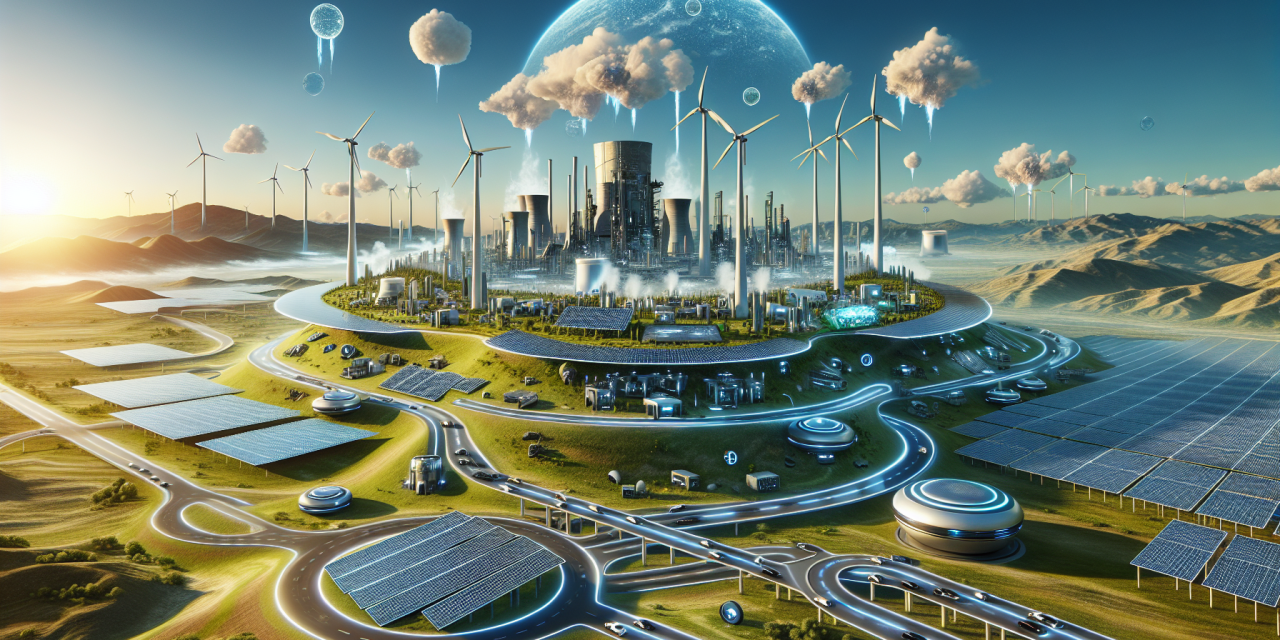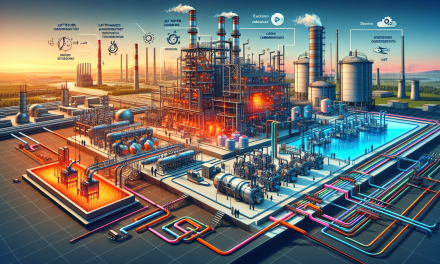Table of Contents
- Introduction
- Gas Turbines
- Co-Generation
- Combined Cycle Power Plants
- Wind Energy
- Solar Energy
- Training for Modern Power Generation
- Frequently Asked Questions
- Conclusion
Introduction
As the world increasingly prioritizes sustainable and efficient energy solutions, the landscape of power generation continues to evolve dramatically. From traditional methods like gas turbines to innovative approaches involving wind and solar energy, the drive towards cleaner and more reliable power sources captivates businesses, governments, and communities alike. This blog delves into the fascinating advancements in gas turbines, co-generation, combined cycle power plants, wind, and solar technologies, offering insights into how these systems contribute to our energy future.
Gas Turbines
Gas turbines play a pivotal role in the modern energy landscape. These powerful engines convert natural gas or other liquid fuels into mechanical energy through the process of combustion. One of the primary advantages of gas turbines is their efficiency. Typically, they can achieve efficiencies of up to 60%, making them a cornerstone in many power generation strategies.
Advantages of Gas Turbines
- Rapid Start-Up: Gas turbines can reach full power in a matter of minutes. This quick response is invaluable during peak demand periods.
- Lower Emissions: Compared to coal-powered plants, gas turbines produce significantly lower carbon emissions, making them a cleaner alternative.
- Flexible Operations: They can operate efficiently at varying loads, thus adapting to the demands of the grid.
Co-Generation
Co-generation, or combined heat and power (CHP), is another method gaining traction. This system simultaneously produces electricity and useful heat from the same energy source, maximizing efficiency and energy utilization.
Benefits of Co-Generation
- Enhanced Efficiency: Traditional power plants waste significant amounts of heat. In contrast, co-generation systems reclaim this waste heat, achieving overall efficiencies of 70-90%.
- Cost Savings: By utilizing waste heat, businesses can save substantially on energy costs.
- Reduced Carbon Footprint: As a result of its high efficiency, co-generation leads to lower greenhouse gas emissions.
Combined Cycle Power Plants
Combined cycle power plants represent a synthesis of gas and steam turbine technologies. These plants extract additional energy from the exhaust gases of gas turbines by using them to produce steam. This steam then drives a steam turbine, increasing the overall efficiency of the power generation process.
How Combined Cycle Plants Work
The process begins with the gas turbine generating electricity and releasing hot exhaust gases. Instead of letting this energy go to waste, the exhaust heats water in a heat recovery steam generator (HRSG). The steam produced drives a steam turbine, which continues the generation of electricity.
Advantages of Combined Cycle Power Plants
- High Operating Efficiency: Combined cycle plants achieve efficiencies upwards of 60%, making them a leading choice in energy generation.
- Lower Operational Costs: The ability to produce more energy with less fuel results in significant cost savings on fuel and operational expenses.
Wind Energy
Wind energy is another radical area of development in power generation, harnessing the motion of the wind to produce electricity. Wind turbines capture kinetic energy from wind, converting it into electrical energy—an attractive option for renewable energy generation.
Advantages of Wind Energy
- Renewable Resource: Wind energy relies on a natural resource that is sustainable and abundantly available.
- Low Operating Costs: Once a wind farm is established, maintenance and operational costs are relatively minimal.
- Job Creation: The wind energy sector has created numerous job opportunities, from manufacturing to installation and maintenance of turbines.
Solar Energy
Solar energy harnesses sunlight to generate electricity, representing one of the most promising avenues for a sustainable energy future. Two primary methods are used in solar energy generation: photovoltaic (PV) cells and concentrated solar power (CSP).
Benefits of Solar Energy
- Abundant Resource: Sunlight is an inexhaustible resource available in most regions of the world.
- Low Environmental Impact: Solar energy systems produce minimal environmental pollution during operation.
- Energy Independence: By utilizing locally available sunlight, regions can reduce reliance on imported fuels.
Training for Modern Power Generation
As power generation technologies evolve, so do the skills required to operate and maintain them. Organizations must invest in training programs that equip their workforce with the necessary skills and knowledge. A great resource for enhancing knowledge in modern power generation, particularly in gas turbines and renewable technologies, can be found in the Modern Power Generation: Gas Turbines & Renewables Course. This course offers insights into the latest advancements and industry practices.
Identifying Training Needs
Understanding training needs is crucial for any organization aiming to stay competitive. To effectively analyze these needs, consider conducting a comprehensive training needs analysis. This process helps identify the skills gap and establishes a roadmap for employee development. You can learn more about this by visiting Unlocking Business Potential: A Comprehensive Guide to Training Needs Analysis and Evaluation.
Fostering Management Skills
Leadership and management skills are essential in guiding teams through the complexities of energy transitions. Attending conferences and workshops that focus on management techniques can significantly enhance these abilities. One such opportunity is detailed in Unlocking Potential: A Journey Through Management Skills and Techniques Training Conferences.
Leadership Development
Moreover, developing leadership capabilities is vital in any thriving organization. Engage with experts and peers at events like the one promoted in Unleashing Leadership Potential: Join the Leading with Excellence Conference and Workshop, where you can explore innovative strategies fostering leadership excellence.
Innovation and Skills for Future Success
To navigate the future challenges of power generation successfully, focusing on innovation and enterprise skills is key. Programs that emphasize these areas can significantly enhance your organization’s adaptability. Learn how to harness these skills through Harnessing Leadership, Innovation, and Enterprise Skills for Future Success.
Unleashing Leadership Mastery
Lastly, engaging in leadership mastery initiatives can profoundly impact personal and organizational success. Explore your true potential by attending workshops that dive deep into self-exploration, like those discussed in Unleashing Leadership Mastery: Discovering Your True Potential Through Self-Exploration.
Frequently Asked Questions
What are the main benefits of gas turbine technology?
Gas turbines provide rapid start-up capabilities, high efficiency, and reduced emissions compared to traditional coal-fired power plants, making them a preferred choice for modern energy demands.
How does co-generation contribute to energy efficiency?
Co-generation systems maximize energy use by generating electricity and capturing waste heat for heating purposes, resulting in remarkably high overall efficiency rates.
What makes combined cycle plants so efficient?
Combined cycle plants utilize both gas and steam turbines to generate electricity, effectively reusing the exhaust energy from gas turbines, leading to significantly higher efficiencies.
Why is wind energy considered a sustainable option?
Wind energy is renewable, low in emissions, and continues to demonstrate significant potential for job creation and local economic development.
What are the advantages of solar energy?
Solar energy is abundant, environmentally friendly, and offers a pathway towards energy independence, allowing regions to lessen their dependence on fossil fuels.
Conclusion
In conclusion, the evolution of power generation technologies, including gas turbines, co-generation, combined cycle systems, wind, and solar energy, marks a significant transition towards cleaner and more efficient energy sources. The future of energy generation lies in embracing these advancements while training the workforce to harness their full potential. Investing in knowledge through workshops and courses can empower teams to stay at the forefront of this dynamic industry. As we work toward a sustainable energy future, collaboration, innovation, and education will play key roles in fostering development and ensuring a cleaner planet for generations to come.





